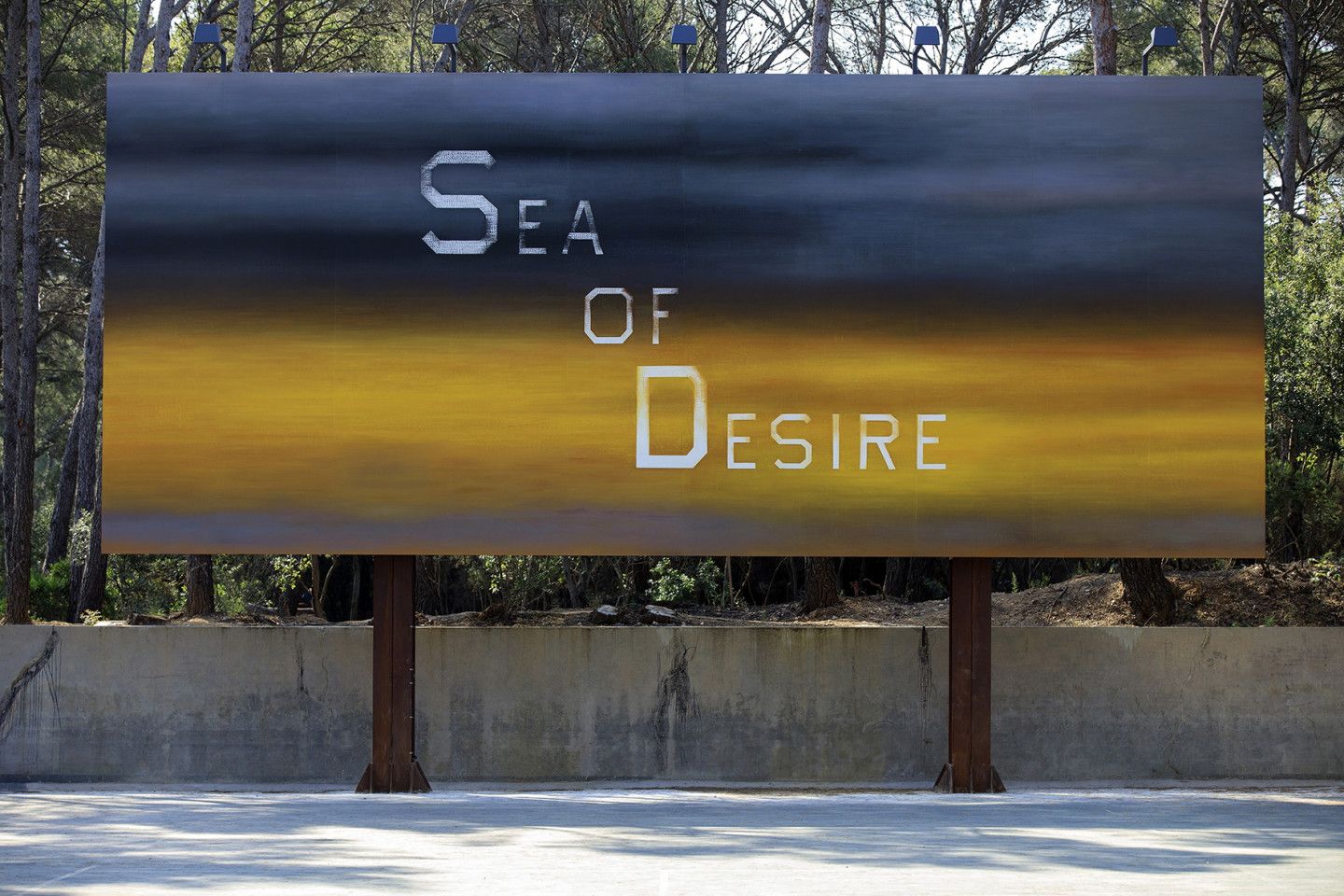The gardens
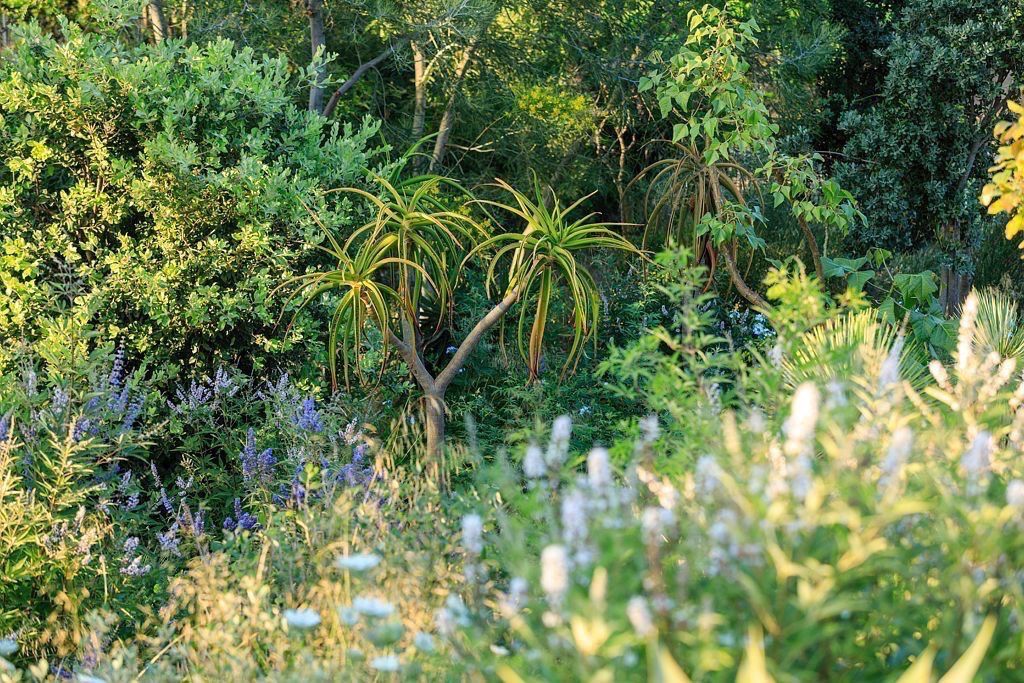
“The philosophy behind this project is to respect and make known the singular local bio-diversity, thus present and preserved thanks to the work of the Port-Cros National Park…”
Louis Benech, landscaper designer
The garden was designed as a “non-garden”, a natural place in which we committed to create
an equilibrium by subtraction and protection more than by addition.
In this way, pioneer and endemic plants were preserved; from the plentiful Cistuses, to the Hyères’ lavender trees, through more rare and protected species such as the Needle-leaved Broom and the Serapias, one of the most beautiful orchids.
The site has been replanted with numerous olive trees to preserve its agricultural nature, and a small orchard has been added in the northern plain. Near the house built in the 1980s, exotic trees like jacarandas have been added to the exotic vegetation that has been present on the site for decades: Eucalyptus, Mimosa and varied Citrus (tangerines, oranges, lemons…).
The trees and shrubs in the South have been landscaped so the works appear and disappear
depending on the vantage point. In the North park, the works are framed by giant cane folding screens.
The Eastern terrace is the only tranquil and flat space offering a view from the villa towards the vineyards through the green oak trees. The grass walkways are mowed or in compacted soil and will change appearance with the seasons.
Louis Benech – Extract from the intent letter
__
Artists from all over the world had been selected to create artworks especially inspired by the place. They spent some time on the Porquerolles’s island in order to be soaked and to imagine sculptures in resonance. They have to be discovered in the garden because they play with nature and our senses. The surrounding sculptures each question our presence in the world in their own way.
With artworks from :
Jean Denant – Tom Sachs – Alexandre Farto AKA Vhils – Jeppe Hein – Gonzalo Lebrija – Wang Keping – Olaf Breuning – Tom Friedman – NILS-UDO – Jaume Plensa – Ugo Rondinone – Ed Ruscha – Cornelia Konrads – Huma Bhabha
Jean Denant
Born in Sète, France, 1979
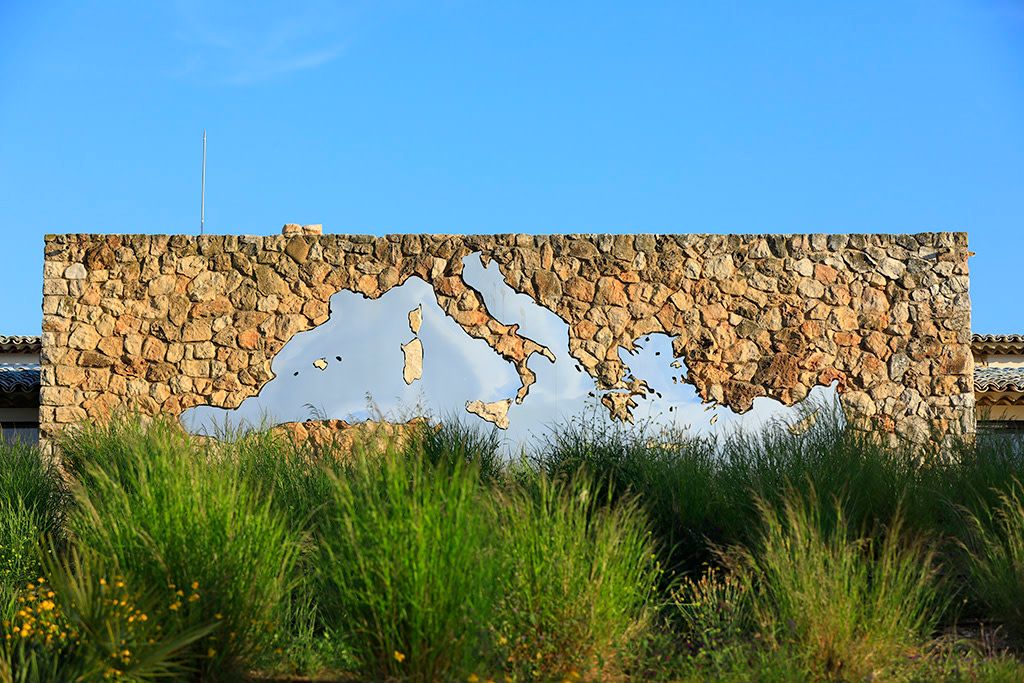
La Traversée, 2018
Set against the wall of the Villa Carmignac facing the garden and the sea, La Traversée / The Crossing follows the shape of the Mediterranean Sea that is reflected in it. Visitors discover the work on leaving the exhibition, in the open air filled with the scents of the nearby flora and the sound of the sea. Linking between the inside and the outside, this work by the artist Jean Denant from Sète changes constantly throughout the course of the day, depending on the light and the weather. This mise en abyme transforms the sea into a real tableau vivant and makes each visitor who is reflected in it a subject of the play. With La Traversée, the viewer is immersed in Jean Denant’s work before bathing in the actual sea, which is recommended at the end of the visit.
Tom Sachs
Born in New York, United States, 1966
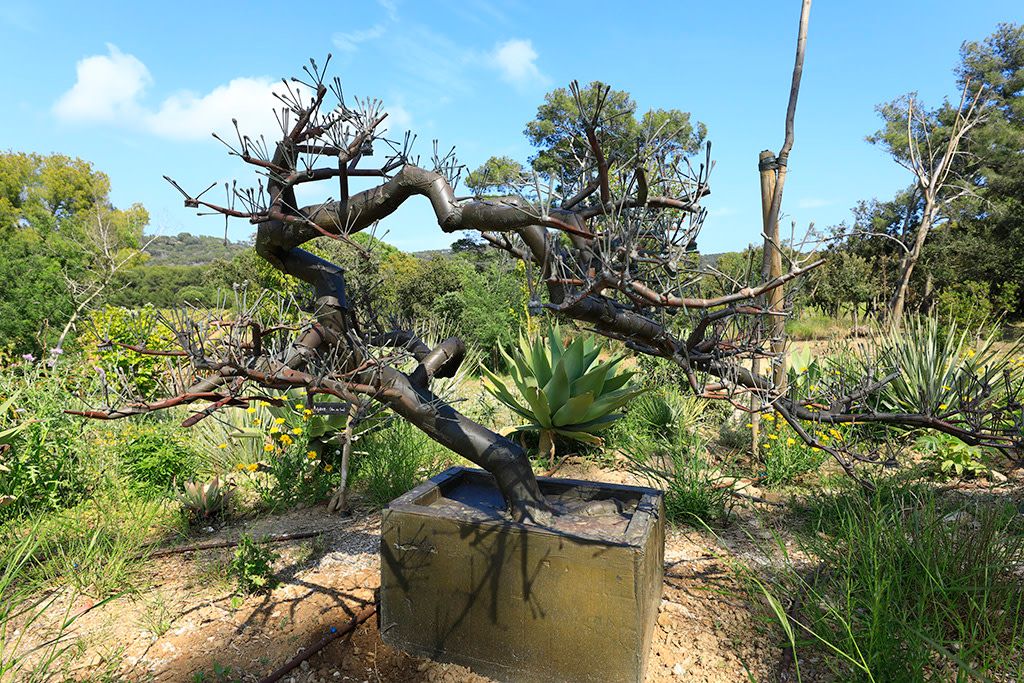
Bonsaï, 2018
Bonsaï suggests the celebrated Japanese arboreal form,except that the very tips of its branches flower with dozens of toothbrushes and cotton swabs. This bronze is a variation on one he showed at the Noguchi Museum in New York in 2016 in the exhibition “Tom Sachs: Tea Ceremony.” Composed of objects that Men use to give themselves a really thorough cleansing, Bonsaï reflects the purification ritual at the heart of the tea ceremony. The sculpture is representative of Tom Sachs’ art of playful distortion; the American artist once again toys with the conventions and objects of devotion, celebrating the trivial and the common up to and including the work’s fabrication.
Gonzalo Lebrija
Born in Mexico City, Mexico, 1972
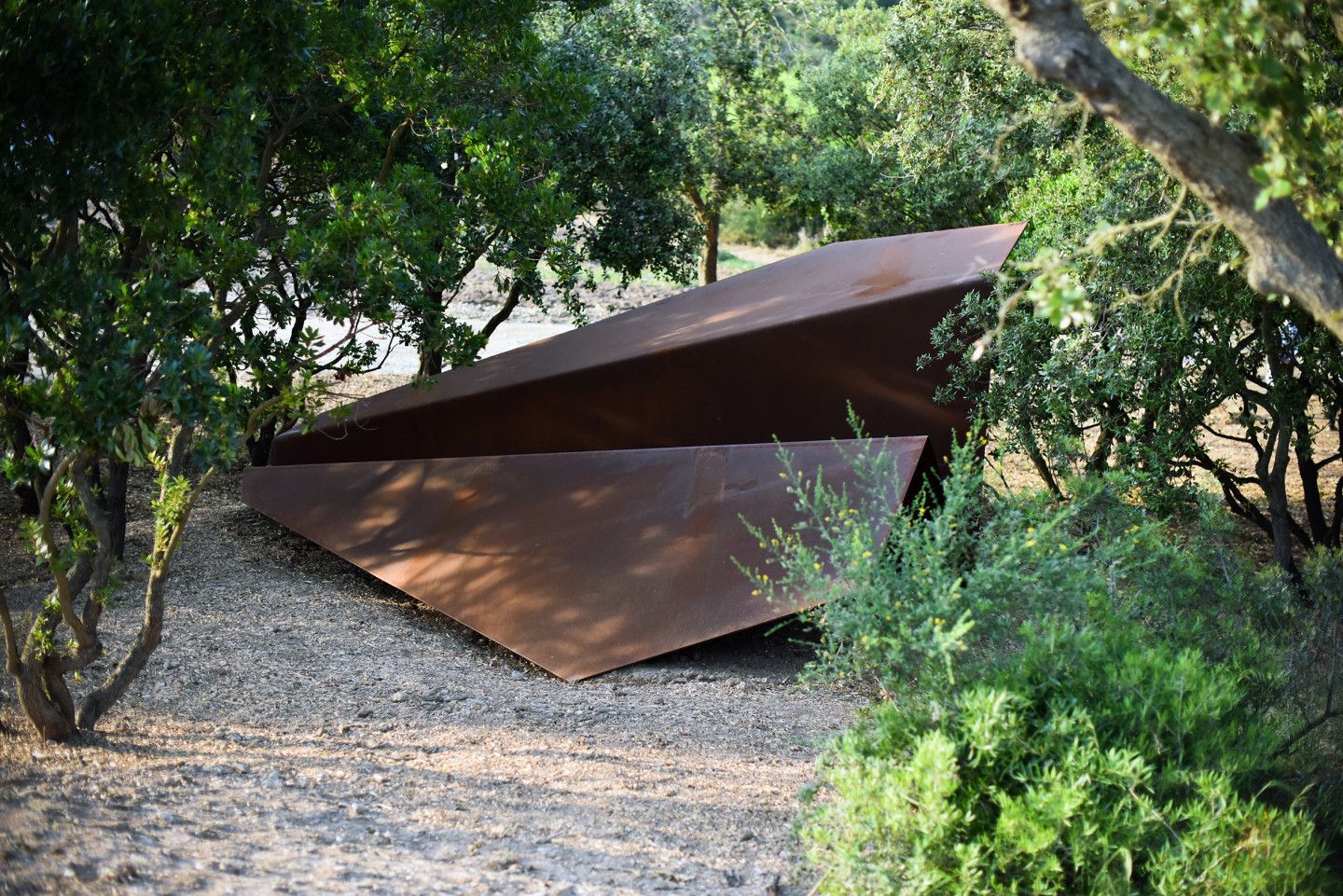
Avion, 2018
Avion is a giant corten steel replica of a smaller paper model made in 2001 during a contest to launch paper planes from the top floor of a building in Guadalajara, Mexico, which had been organised by Gonzalo Lebrija. After having filmed the paper planes, and then having exhibited them unfolded in 2015 in his parisian gallery, the Mexican artist, fascinated by the poetry of flight, has created this monumental structure for the Porquerolles site. Landed in the forest and facing vineyards, Avion intrigues with its sense of disproportion, absurdity, melancholy and the strangeness of its presence in this landscape. We are surprised to imagine its trajectory, its path. With this steel paper plane, the Mexican artist plays with the space between power and vulnerability, both underlying themes in his work.
Jeppe Hein
Born in Copenhagen, Denmark, 1974
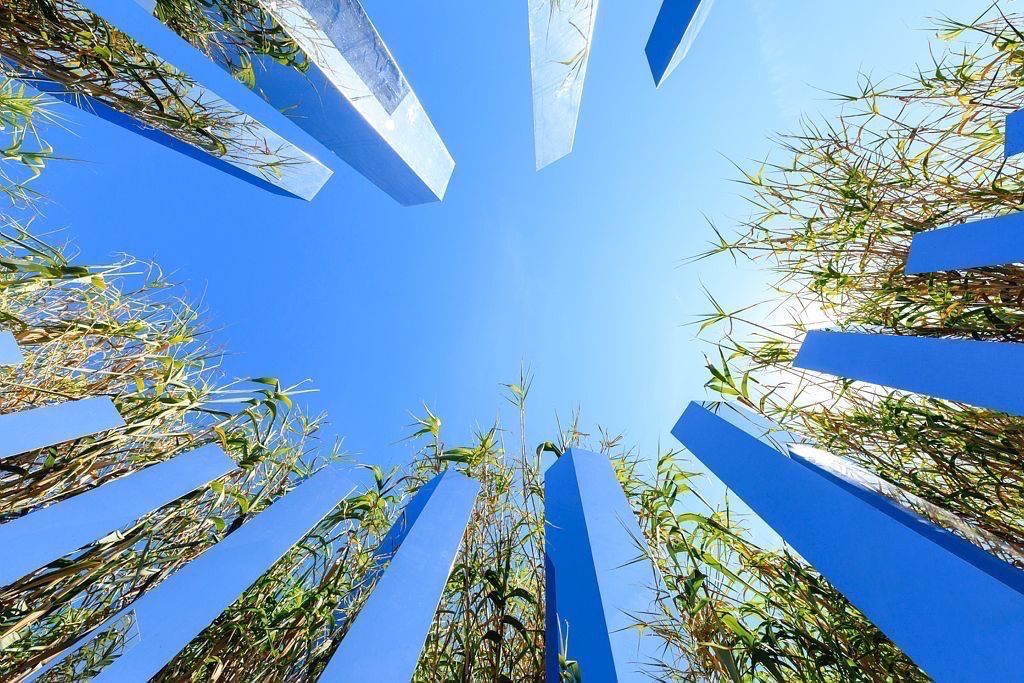
Path of Emotions, 2018
Shimmering through the canes of Provence from the North garden, the glistening labyrinth of the Danish artist Jeppe Hein, well-known for his immersive and minimal interventions, calls the traveller like a siren’s song. Whilst its height remains the same everywhere, that of the interior path varies, giving the impression of a moving landscape. To this game of surfaces is added a game of mirrors, accentuating the disturbances of spatial perception. The visitor is thus lost in his own reflections. The work has several entrances, like so many incisions in its round form reminiscent of the achillea, a flower that grows in the meadow where it is installed. In the centre, a mise en abyme infinitely prolongs this game of surfaces. With its unusual perspectives, Path of Emotions offers another way to experience the environment.
VHILS
Born in Lisbon, Portugal, 1987
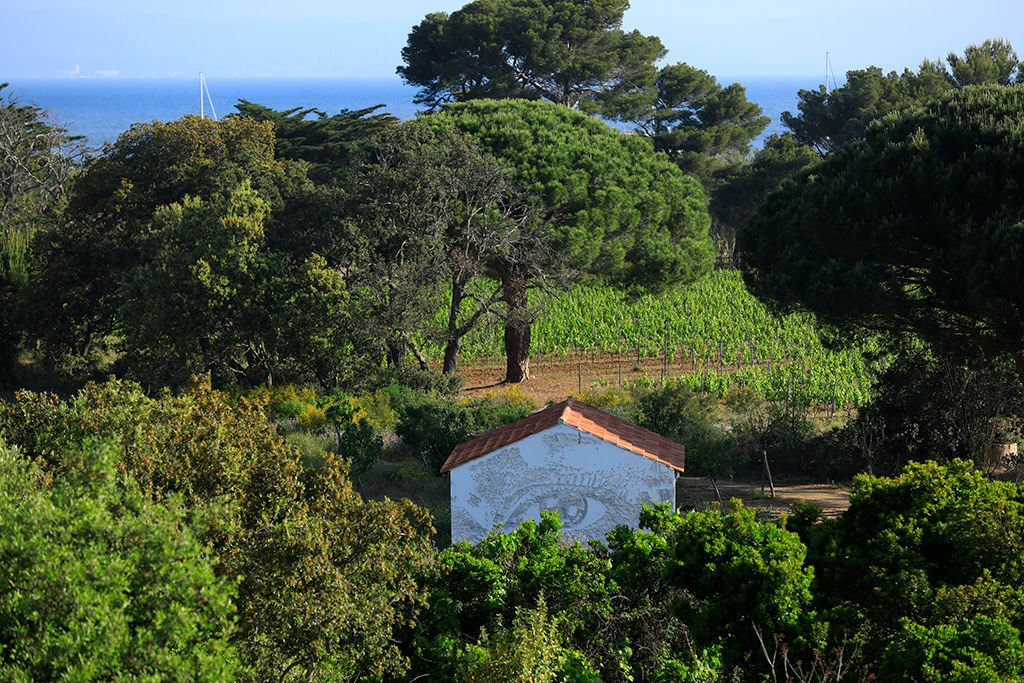
Scratching the surface Porquerolles, 2018
After travelling the world and placing revolutionary stencils across the globe, Alexandre Farto, AKA Vhils, arrived in Porquerolles. The Portuguese artist was commissioned to work on the small house of the North garden, seen in ‘Pierrot le Fou’, the film by Jean-Luc Godard, and began scraping and carving its facades with chisel and jackhammer to make faces appear in them. The inhabitants of Porquerolles may recognize the people who have inspired the artist. The walls watch and attract us. Inside the shed, a well plunges deep into the bowels of the island, inviting the visitor to look below the surface. Scratching the surface Porquerolles, or how to make visible the invisible, give a new meaning to what surrounds us.
Cornelia Konrads
Born in Wuppertal, Germany, 1957
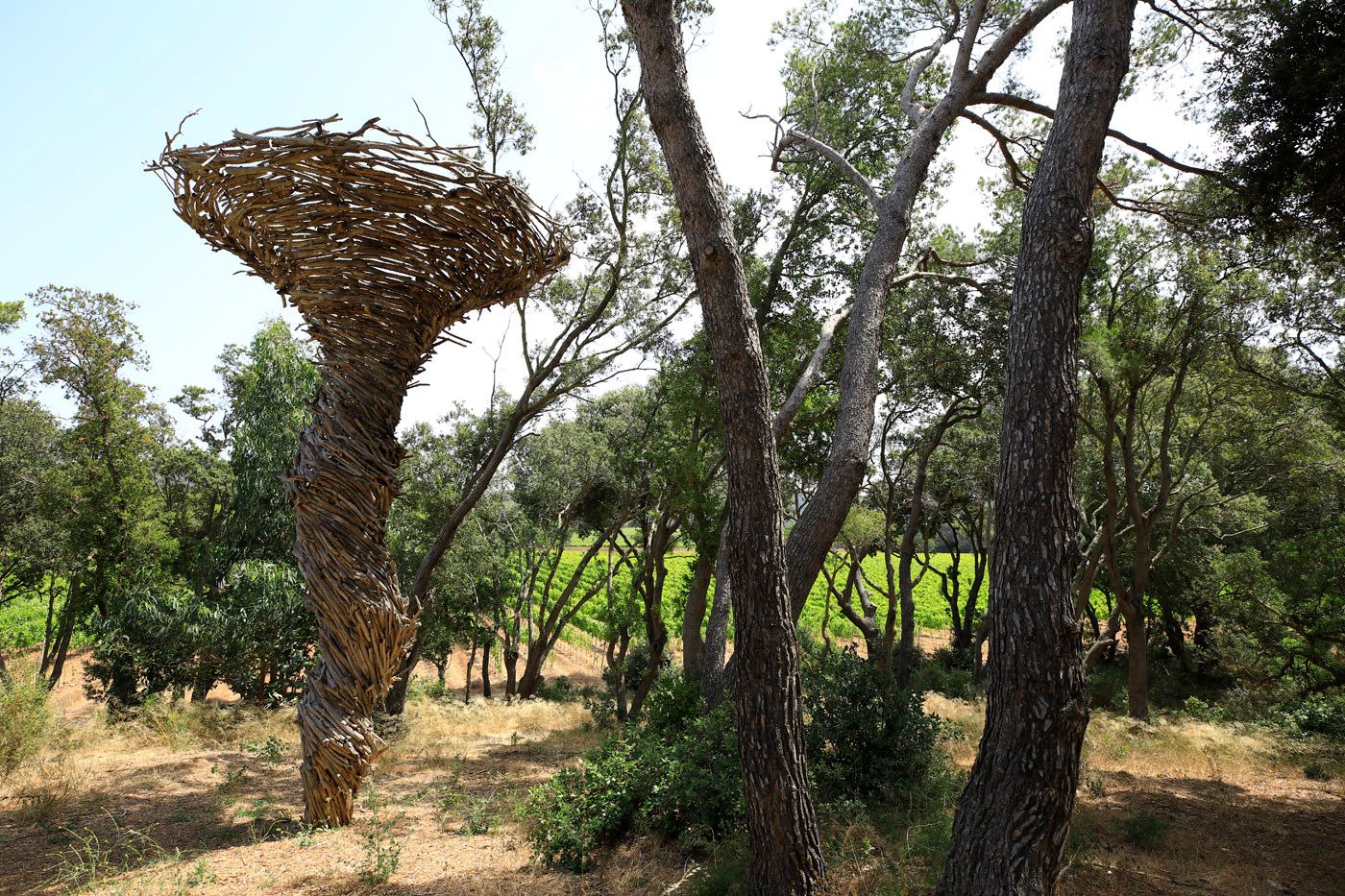
Le Tourbillon, 2018
Cornelia Konrads’ piece reveals itself in the undergrowth of the Villa, a whirling movement of forest energy between the northern garden prairie and the scrubland to the south. As if born of the major elements of the island, wood and wind, the sculpture appears to fly away before our eyes in between the oak trees. A Land Artist, Cornelia Konrads calls the relationship between man and nature into question with poetry and humour, with dreamlike pieces that reconcile these two forces. The whirlwind is made up of driftwood gathered by the artist and by the National Park teams on the coasts of the island. Carried by marine currents around Porquerolles Island, they now tirelessly pursue their flight amongst the trees.
Huma Bhabha
Born in Karachi, Pakistan, 1962
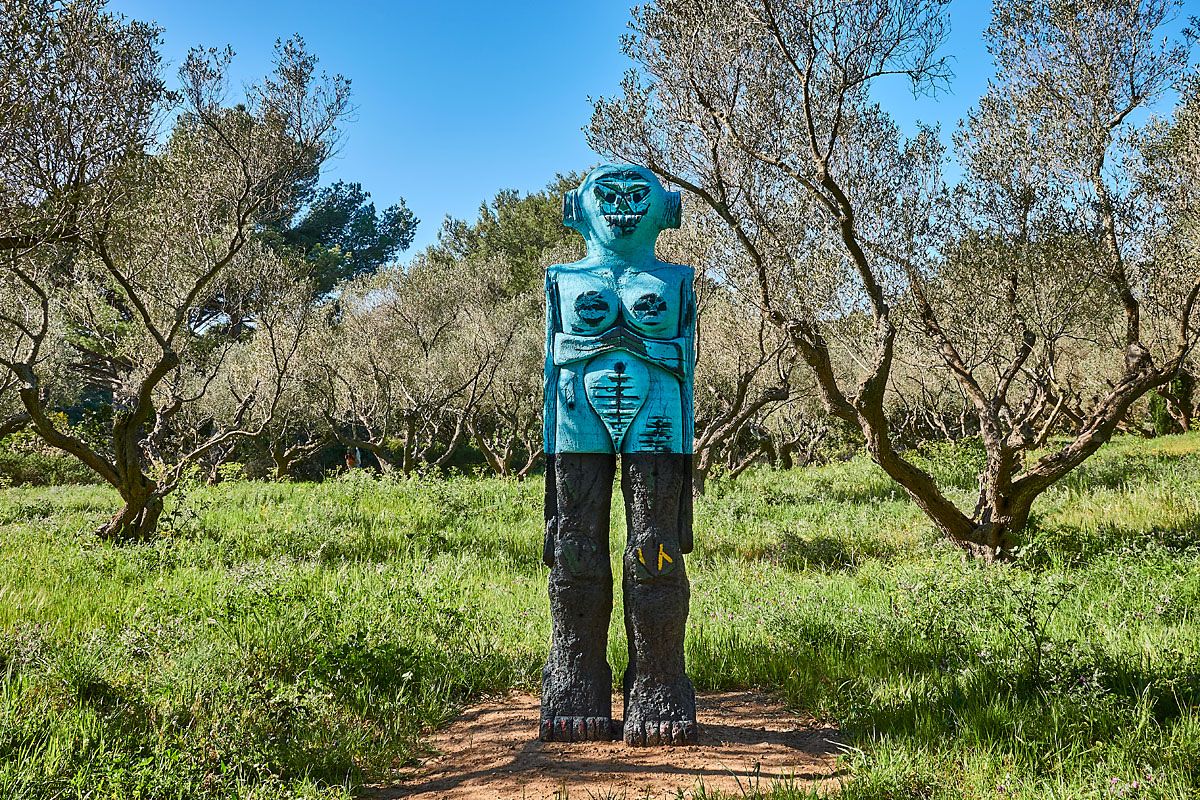
Receiver, 2019
At the entrance to the olive grove, Receiver rears up like a guardian from another age, a creature that is both male and female, human and monstrous. Cast from sculpted cork, Huma Bhabha’s piece uses the artist’s aesthetic language informed by the multiculturalism of her native Karachi, an historical crossroads between the East and the West. She has developed a body of work based on the topics of colonialism, war, displacement, and the history of art. Here, Huma Bhabha imagines a kind of hybrid, by turns inspired by ancient Greek statues, the position of the Buddha with their hands together, and the universe of science fiction, where aliens are able to receive information from other beings.
Wang Keping
Born in Beijing, China, 1949
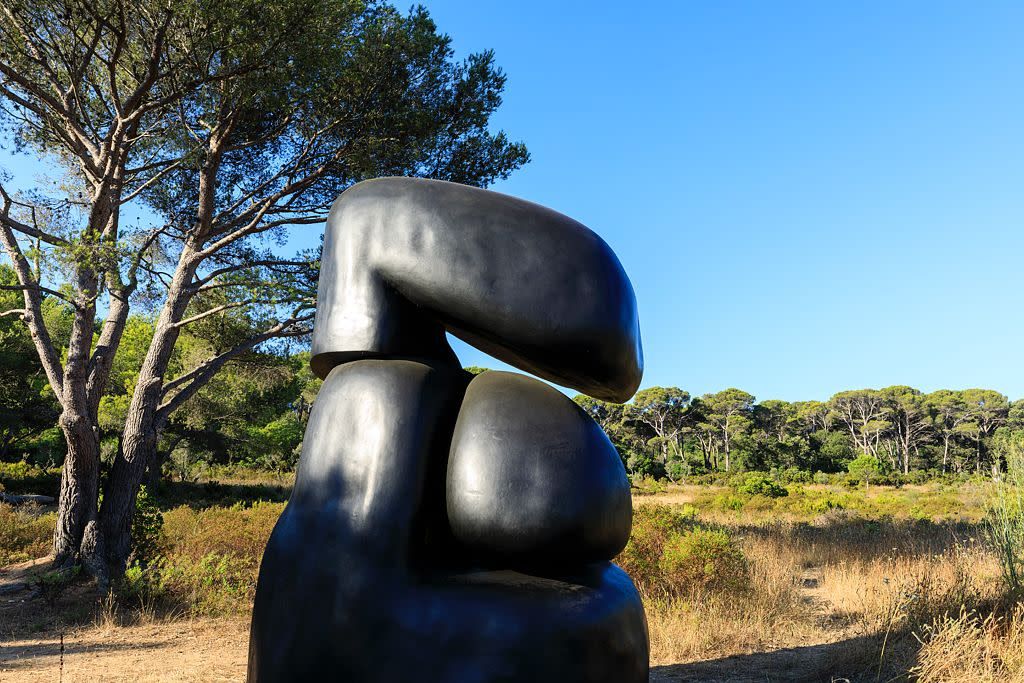
LOLO, 2018
A bronze sculpture by Wang Keping created from a smaller work in wood, LOLO expresses a femininity, that is at once simple and original as sought by the artist. To create it, Wang Keping used two shapes of the letter ‘L’ and two shapes of the letter ‘O’, which gave the work its title. The representation of women has been a constant preoccupation for the Chinese artist since his move to Paris in 1983. His sculptures of soft, generous, maternal and sensual forms recall both African statuary and the work of Brancusi. A leading figure of the Chinese artistic avant-garde and early opponent of the Communist regime, friend and contemporary of Ai Weiwei, Wang Keping continues with his works on the naked female body which is still a taboo subject in China, another form of artistic protest dedicated to the representation of beauty and feminity.
Olaf Breuning
Born in Schaffhausen, Switzerland, 1970
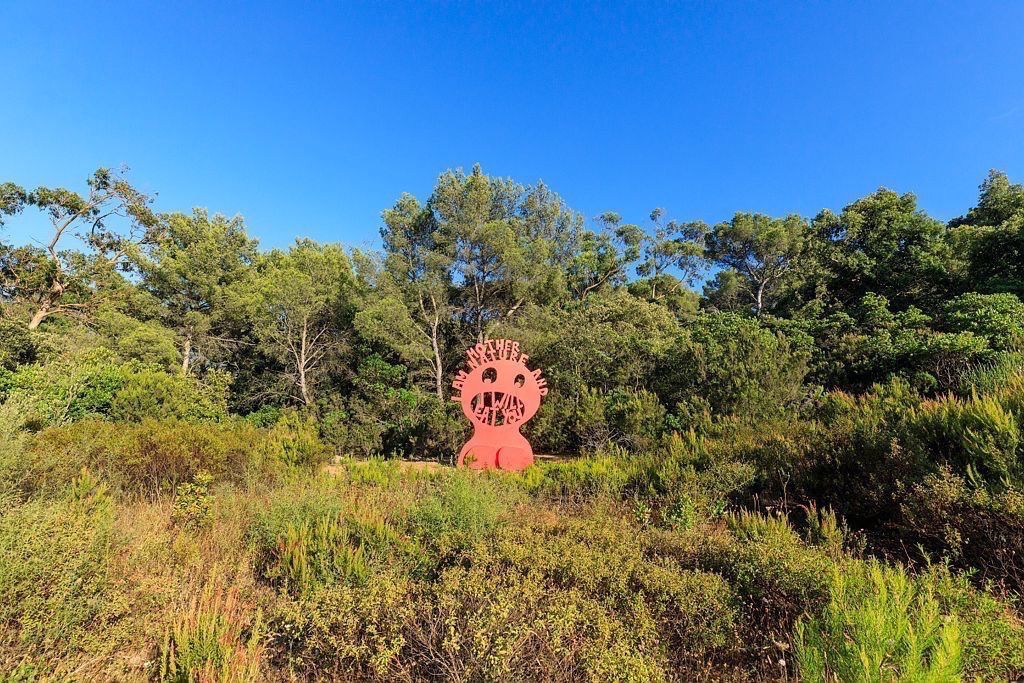
Mother Nature, 2018
This monumental sculpture was created from an existing drawing by the Swiss artist Olaf Breuning. The journey from the second to the third dimension, on this scale and in this environment, completes the work’s caustic and offbeat character. Faithful to the irony that characterises his work, the artist does not hesitate to install a monstrous, devouring Mother Nature in the middle of a protected natural area. ‘I am Mother Nature and I will eat you’. The message is clear, preventative, in bright red. Mother Nature warns us about herself – a nurturing mother who has been exploited for too long and who may turn against her own children. Nature always reclaims her rights. She seems to tell us, men just need to behave well.
NILS-UDO
Born in Lauf an der Pegnitz, Germany, 1937
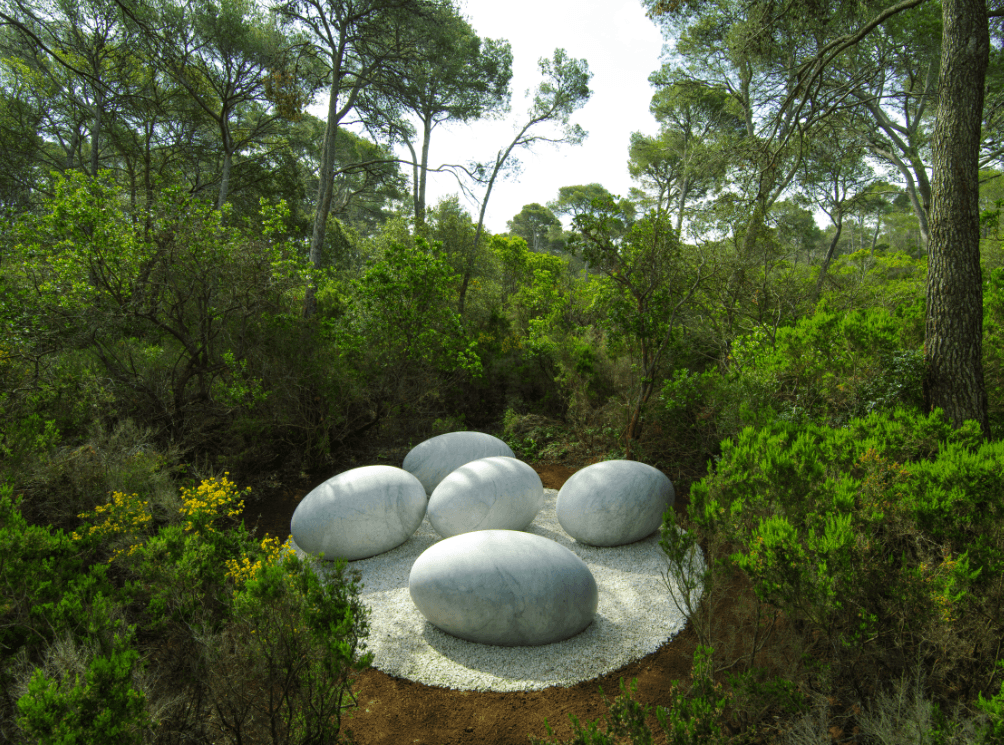
La Couvée, 2018
Hidden in the forest, the five giant eggs made of white Carrara marble by NILS-UDO wait to be hatched by the gaze of visitors who venture into the South garden. This work follows a series of other nests recently installed in Val di Sella in Italy by the German artist, world famous for his photographs and installations in nature and urban landscape. NILS-UDO is obsessed with the form and symbolism of the nest, as the first shelter, matrix and refuge. Evoking possible cycles of birth and rebirth at the end of the journey, this sculpture imposes on the viewer its scale and rhythm – those of nature and life. In harmony with its environment, as in all of NILS-UDO’s works (an artist at the forefront of the « Art in Nature » movement), La couvée/The brood invites - or even insists upon - a sense of calm, deceleration and quietness.
Jaume Plensa
Born in Barcelona, Spain, 1955
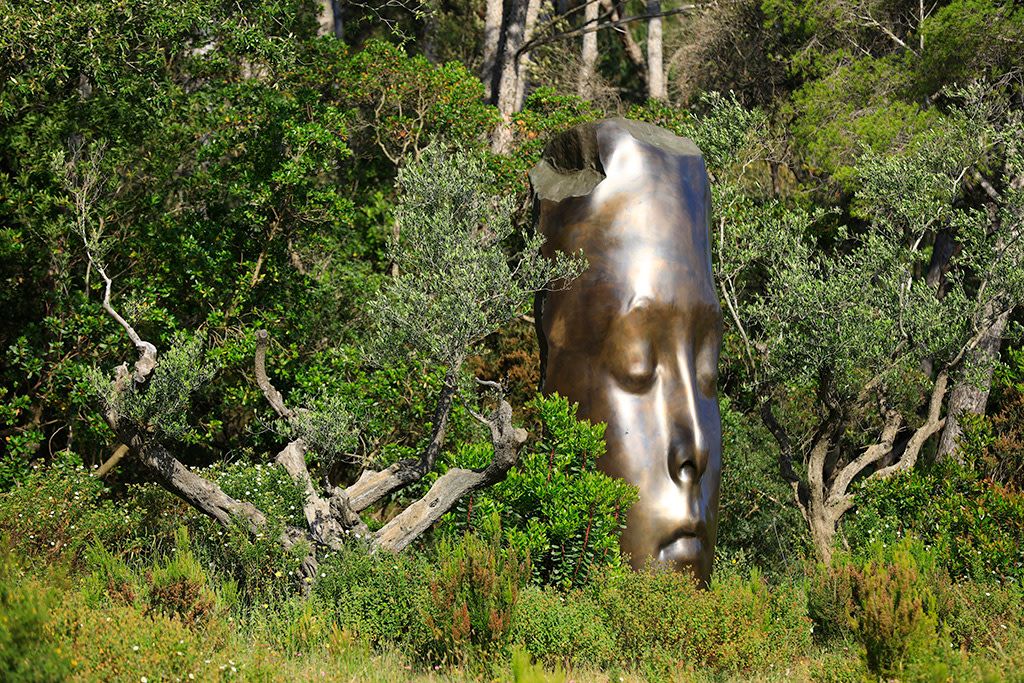
Les trois Alchimistes, 2018
Like the giant Moai of Easter Island, Jaume Plensa’s three Alchemists seem to watch over Porquerolles. The three child faces await the visitor at the edge of the woods, in a soft and powerful face-to-face meeting. With their eyes closed and serene expression, their presence calms the tempo. According to the artist, as beings endowed with a high level of consciousness, they are the guardians of knowledge forgotten by men. Their shape, stretching towards the sky gives them a special, almost mystical, aura. As perfect alchemists, they transform the reality of the visit into a poetic, miraculous fiction. In line with the Spanish artist’s monumental works recently installed in the US or the Netherlands, the silent presence of these three heads is an invitation to contemplation, reflection and introspection.
Tom Friedman
Born in St. Louis, United States, 1965
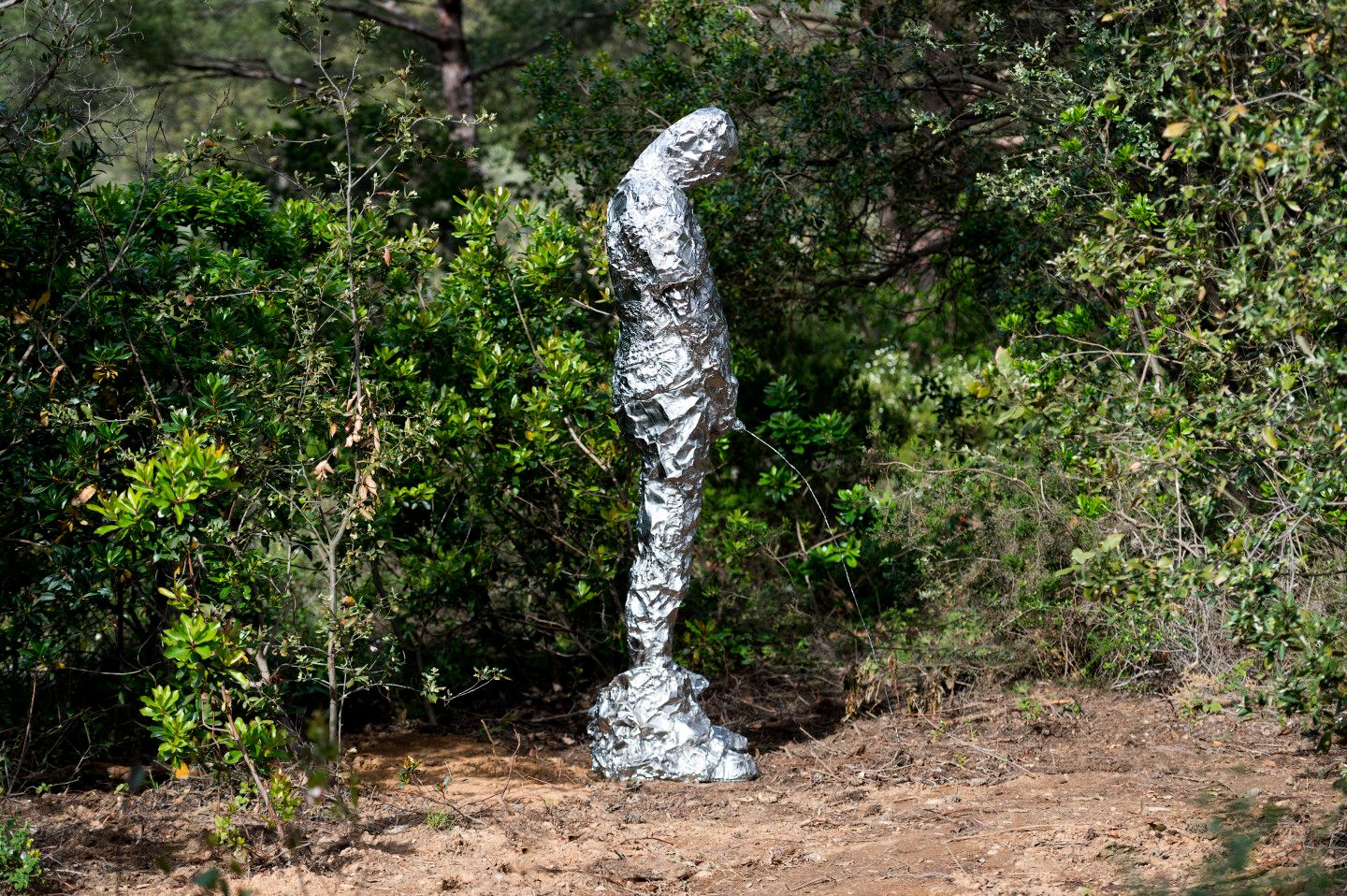
Untitled (Peeing Figure), 2018
This work by the American artist Tom Friedman awaits the visitor at a turn in the pathy, hidden behind a tree. It represents, as its title indicates, a man urinating, pants down. Originally created from every day consumer products made of aluminium, this version was cast in steel, retaining all the original details. Unexpected in this context, the sculpture by the American artist who recently installed on Park Avenue a giant made of the same material staring up at the New York sky (Looking Up) surprises. Incongruous and even provocative, it questions our position as assumed voyeur. Stainless, it appears fragile. Playing with these contrasts, Tom Friedman plays with his audiences’ predicted reactions and invites us to go beyond, and to be wary of, first impressions.
Ugo Rondinone
Born in 1963, Brunnen, Suisse
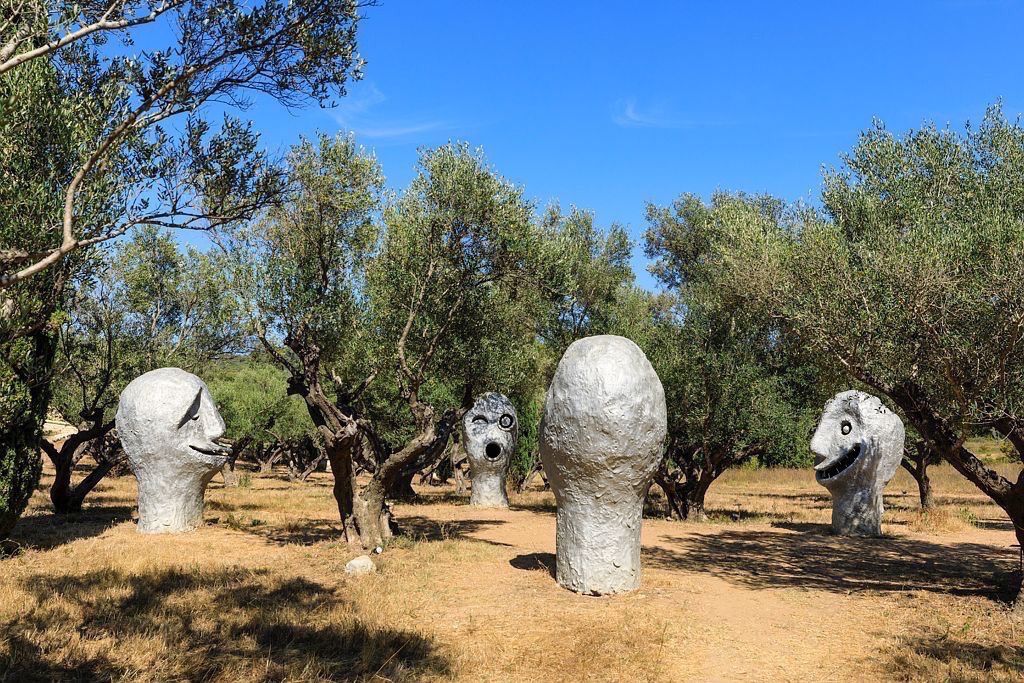
Four Seasons, 2018
Symbolising the four seasons and placed according to the four cardinal points, these expressive and playful heads by Ugo Rondinone recall the twelve sculptures that the Swiss artist has installed around the water basin of the Tuileries garden in Paris in 2009. In silver patinated bronze, they represented the twelve months of the year. Evoking in the same way the inexorability of passing time and the cycle of the seasons, Rondinone’s work in Porquerolles intrudes among the olive trees. These strange idols, which have as much in common with carnival masks as with primitive statues, make us smile as much as they intrigue or even worry. Placed at their centre, we experience singular, strange, and dreamlike communion.
Ed Ruscha
Born in Omaha, Etats-Unis, 1937
